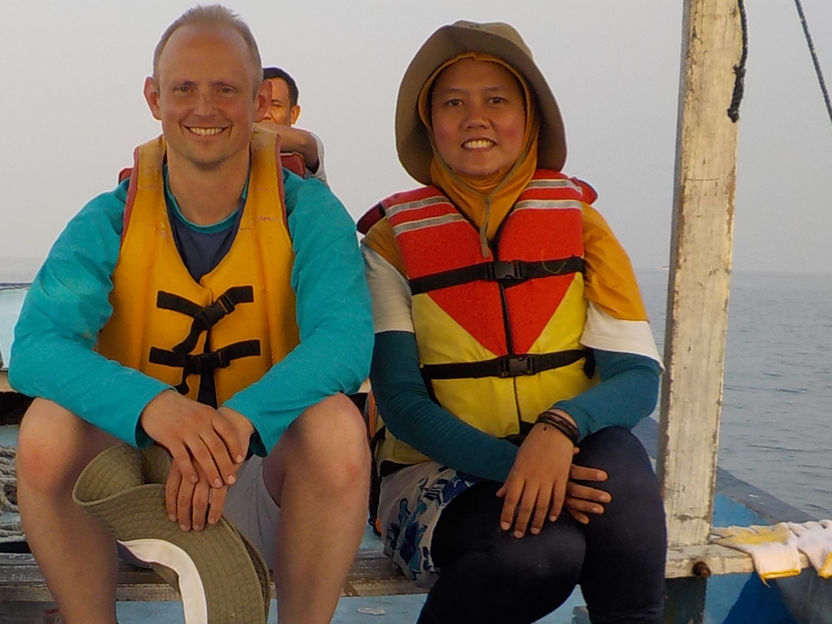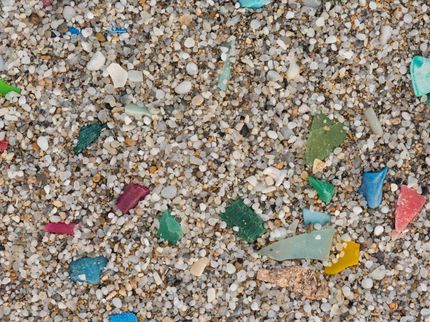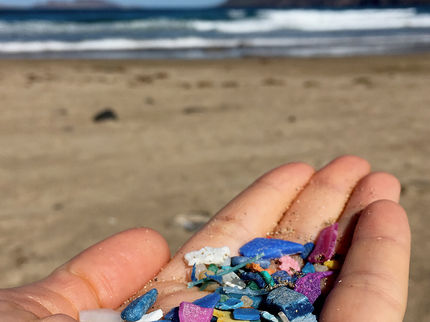Artificial rocks from macroplastics threaten ocean health
German-Indonesian research team identifies new rock-like compounds from plastic waste and coral rubble for the first time
plastic waste is a problem on our beaches. Hence, it is largely removed in a coordinated manner within a few weeks. However, it can litter other coasts of the world for many months to years due to unregulated waste disposal. Often the garbage on the beach is simply burned and a special form of plastic waste is created: so-called plastiglomerate. This "rock" is made up of natural components, such as coral fragments, held together by the melted and reconsolidated plastic. A new study by a German-Indonesian research team at Kiel University has now demonstrated, using field samples from Indonesia, that such rocks pose an increased environmental risk to coastal ecosystems such as seagrass beds, mangroves or coral reefs. The melted plastic decomposes more quickly into microplastics and is also contaminated with organic pollutants. The researchers recently published the findings in the journal Scientific Reports.

Dr Amanda Utami (right, BRIN) and Dr Lars Reuning (left, CAU) jointly collected field samples in Indonesia and studied them in collaboration with researchers from Kiel University.
© Dwi Amanda Utami, BRIN
"Until now, there have been rather basic studies describing the formation of plastiglomerates. With our results, we have shown for the first time how plastiglomerate differs from other plastic waste and can make better statements about its environmental impact", says first author Dr Amanda Utami, who works as a scientist at Indonesia's largest science organization (BRIN, Badan Riset dan Inovasi Nasional) and came to Kiel on a three-month fellowship. The research work was made possible by funding from the German Academic Exchange Service (DAAD) and cooperation between BRIN and scientists in the Kiel Marine Science (KMS) priority research area at Kiel University.
New insights through international cooperation
If plastic waste is burnt directly on the beach, this melting and burning process produces the plastiglomerate "rock", in whose plastic matrix the carbon chains are degraded. This chemically degraded plastic weathers more rapidly into microplastics through exposure to wind, waves and sediment grains on the beach. The incomplete combustion process releases new pollutants from the plastic that first settle on the plastic and are then released into the environment. These contaminants often have higher ecotoxicological relevance than the parent plastic, are potentially bioavailable, and thus can be introduced and enriched in the food chain.
Scientist Utami collected a total of 25 field samples from beaches on Panjang Island on the western side of the Indonesian island of Java and analyzed them in the laboratory together with researchers from Kiel University. One of them is Dr Lars Reuning, Utami's scientific host in Kiel and second author of the study: "Our analyses show that Plastiglomerates are contaminated with organic pollutants. Even though further results on bioaccumulation are still pending, they can be classified as potentially carcinogenic to humans." Reuning is a member of the Paleontology Research Group at the Institute of Geosciences at Kiel University. The working group, led by Professor Miriam Pfeiffer, is also involved in the German Research Foundation's (DFG) Earth Science Priority Program 2299 "Tropical Climate Variability and Coral Reefs."
Chemical investigations of pollutants in the Kiel laboratory
The researchers first differentiated the plastiglomerate samples according to optical criteria into less strongly as well as more strongly melted or burned samples and extracted volatile pollutants with the help of solvents. These analyses, which were carried out in Professor Lorenz Schwark's Organic Geochemistry Group at the Institute of Geosciences, revealed, for example, contamination with polycyclic aromatic hydrocarbons (PAHs) and phthalates, which are used as plasticizers for plastics. Experts consider both classes of substances to have a high potential for causing cancer.
The research team also used physicochemical methods and comparison with databases to characterize the nature of polymers such as polypropylene (PP) or polyethylene (PE) or their mixtures. They conducted measurements using Fourier transform infrared spectroscopy (FTIR) in the working group of Professor Gernot Friedrichs at the Institute of Physical Chemistry at Kiel University to investigate the degree of weathering. Outcome: Areas that were already visibly more exposed to the burning process also showed a greater degree of weathering and oxidation.
Numerous effects on coastal ecosystems possible
"To better assess environmental damage, we are currently researching the exact composition of the organic pollutants associated with the plastic, such as organophosphorus compounds”, says geochemist Schwark. Also of interest is the tendency of the plastiglomerates to decay easily. "Normally, photo-oxidation by UV light affects the top layer of plastics. But thermo-oxidation by burning the plastic waste significantly alters the internal structures of the material as well", says geoscientist Reuning.
In the future, numerous coastal ecosystems of tropical waters off Indonesia as well as worldwide will be affected by Plastiglomerates. Studies already show that organic pollutants are also transferred to corals or other marine organisms and can thus have a negative impact on ocean health. Further studies are therefore also looking at other ecosystems such as seagrass beds, mangroves or organisms living in the sediment.
"Compared to normal plastic waste, the unique properties of Plastiglomerates require a specific form of coastal management", Utami sums up. “If trash from urban areas on tropical beaches were better disposed of and managed, a serious problem could be prevented.”






























































